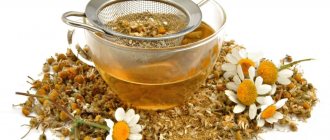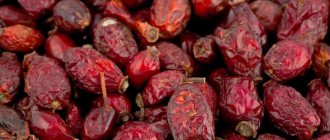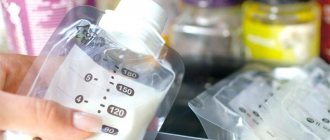Cranberry - main characteristics
Thanks to its rich vitamin composition, cranberries are a worthy competitor to many other berries and fruits. Thus, the supply of vitamin C allows it to compete with lemons, grapefruits and oranges. Read more about the beneficial properties and value of this healing berry.
Did you know? Cranberry has many popular names, which can lead to confusion, because you can’t always guess which berry is meant. Thus, traditional healers call cranberries forest grapes, snowdrops, stoneflies, craneberries, and northern lemons.
Chemical composition
Despite the rich assortment of vitamins and microelements that distinguish the chemical composition of the fruits of the crop, it is relatively “poor” in nutritional value. Thus, 100 g of red fruits contain only 28 kcal, which explains their popularity in dietetics. The proportions of the components that make up the nutritional value are as follows:
- protein: 0.5 g;
- fat: 0.2 g;
- carbohydrates: 3.7 g (divided into glucose - 2.5 g, fructose - 1.1 g and sucrose - 0.2 g).
As for the chemical composition of berries, it is rich:
- water: 89 g;
- ash: 0.3 g;
- organic acids: 3.1 g;
- fiber: 3.3 g;
- vitamin and mineral components;
- specific plant compounds.
The vitamin component is represented by reserves:
- tocopherol (E): 1 mg;
- thiamine (B1): 0.02 mg;
- riboflavin (B2): 0.02 mg;
- pyridoxine (B6): 0.08 mg;
- folate (B9): 1 mcg;
- niacin (PP): 0.05 mg;
- biotin (H): 100 mcg;
- phylloquinone (K): 5 mcg.
- ascorbic acid (C): 15 mg.
Did you know? The original name of cranberry is craneberry. This name is explained by the fact that the inflorescences of the crop on long stems reminded people of this particular bird.
The mineral component (macro- and microelements) is represented by the following particles:
| calcium | 14 mg |
| magnesium | 15 mg |
| sodium | 1 mg |
| potassium | 119 mg |
| phosphorus | 11 mg |
| iron | 0.7 mg |
| zinc | 0.1 mg |
| silicon | 1.5 mg |
| chlorine | 6.7 mg |
| aluminum | 48 mcg |
| boron | 120 mcg |
| vanadium | 6 mcg |
| cobalt | 1.45 mcg |
| copper | 61 mcg |
| rubidium | 44 mcg |
| strontium | ~26 µg |
| fluoride | 10 mcg |
| nickel | 17 mcg |
| lithium | 3.5 mcg |
The healing power of cranberry berries is also explained by the presence in their composition of specific plant compounds - bioflavonoids:
- flavonols: 349 mg;
- anthocyanins: 1059 mg;
- catechins: 374 mg.
Cranberry fruits are rich in bioactive compounds, including tannins, esters and antioxidants. Cranberries also contain components such as:
- saturated fatty acids: 0.11 g;
- polyunsaturated fatty acids: 0.022 g Omega-3 and 0.033 g Omega-6;
- citric, malic, quinic, benzoic, ursolic, chlorogenic, oleanolic, succinic and oxalic acids: 3.1 g.
Did you know? In England, cranberries received the popular name bearberry, since the British noticed that bears often feast on the fruits of the bush.
Beneficial properties of cranberries
- Due to the fact that cranberries contain the lion's share of the periodic table, they are known for their medicinal beneficial properties:
- have general strengthening and immunomodulatory functions;
- act as an antipyretic agent;
- capable of destroying pathogenic viruses and bacteria, effectively eliminating the symptoms of flu and colds;
- prevent the development of carcinogenic cells;
- vitamins belonging to group B have a positive effect on the functioning of the nervous, digestive, and circulatory systems;
- tocopherol prevents anemia, is responsible for high-quality delivery of oxygen to cells, improves appetite, maintains muscle tone, and protects cells from oxidative processes;
- the richness of cranberry composition with vitamins and minerals effectively normalizes metabolic processes in the body: removes free radicals and toxins, which is especially important for children who live in large industrial cities with a polluted environment;
- the fruits of the plant are an effective means of combating diseases of the oral cavity (stomatitis, periodontal disease), which often bring a lot of trouble to children and their parents;
- regular consumption of berries prevents the development of pathogenic flora in the genitourinary system;
- cranberries are recommended for use for bronchial diseases: it is recommended to combine them with honey;
- It is advisable to introduce cranberry fruits into a child’s diet if he suffers from dysbiosis, diabetes, or low stomach acidity.
Composition of cranberry juice
When preparing a drink, the berry transfers to it its beneficial substances contained in its composition in abundance. It contains more than 20 valuable elements.
Cranberry juice contains:
- Vitamins of group B, C, E, PP.
- Micro- and macroelements (iron, magnesium, phosphorus, zinc and calcium).
- Benzoic, oxalic, citric, quinic and malic acid.
- Flavonoids.
- Glucose, fructose.
Due to its unique composition, fruit juice has been consumed since ancient times as a tasty drink and healing agent.
benefits and harms of grapefruit juice
Beneficial properties of cranberries for children
The richness and diversity of the vitamin and mineral composition of red wild berries give it many beneficial properties for the body of children. Thus, the berry is used to eliminate the symptoms of colds, problems with the digestive tract, to eliminate vitamin deficiency and increase immunity.
Important! Before introducing cranberries into your baby’s diet, be sure to read the contraindications and harms of consuming this product.
For colds
The child’s body is very sensitive to the effects of medications, especially antibiotics, so it is recommended to treat the baby using folk remedies, among which cranberry takes pride of place. The effectiveness of its use in the fight against colds (adenoviral infections, influenza, acute respiratory viral infections, acute respiratory infections) lies in the properties of saturating the body with vitamins and minerals, strengthening it, and the ability to preserve the strength and energy of a small organism in the fight against diseases.
Cranberry is a popular folk antipyretic remedy. This effect of the berry is explained by its diaphoretic functions and ability to reduce intoxication. The fruits have powerful antiseptic properties and are a good expectorant, which is also important in the treatment of colds.
In order to eliminate the symptoms of colds, prepare a drink that contains cranberry berries and water: a glass of fruit is poured with a liter of boiling water and brought to a boil. Then cool and filter. Take the medicine throughout the day (3-5 times), like tea.
Important! Cranberries go well with honey, which only enhances the effect of this folk medicine, so it is recommended to sweeten cranberry tea with honey. And the child will be more willing to drink a sweet drink.
To strengthen the immune system
Wild berries are widely known in immunology because they can quickly increase and strengthen the immunity of children and adults. The whole secret is that the berry is a rich source of ascorbic acid. It is also considered a powerful natural antiseptic.
The fruits of the culture contain many enzymes that prevent microbes, viruses and bacteria from passing through cell membranes, which also serves to increase immunity. To do this, cranberries can be consumed either fresh (a handful per day is enough) or as part of various products. Since the child does not always like sour red fruits, it is recommended to prepare a delicious cranberry “vitamin bomb” from them.
To do this, you need to mix 0.5 kg of cranberry fruits and apple slices and chop well in a blender or grind. Then add the kernel of 1 walnut, previously chopped. Pour the resulting mixture into syrup made from honey and water (1 kg and 0.5 l, respectively) and boil for 30 minutes. Place the resulting medicine in a glass container and store in the refrigerator. The daily norm is 1 tbsp. l. The medicine should be washed down with warm water.
Important! This “vitamin bomb” must be cooked over low heat, otherwise the ingredients will lose their beneficial properties.
For vitamin deficiency
In early spring, late autumn and winter, cranberries take on the functions of a real lifesaver, since it is not always possible to buy overseas fruits and vegetables due to their exorbitant prices, and at such times there are practically no home sources of vitamins, except perhaps apples and carrots. Cranberries can be stored all year round: just soak them in water - they will not lose their healing properties. It can be eaten either separately, a handful per day, or as part of healing mixtures, for example, traditional healers recommend grinding 0.5 kg of forest fruits with 1 lemon and adding half a glass of honey to the resulting mixture. This medicine is added to tea (2 tablespoons) 1-2 times a day.
For digestive disorders
If a child experiences problems with the digestive system, cranberries can help eliminate them, as they can improve intestinal motility, increase the secretory functions of the stomach and pancreas, help enrich the intestinal microflora, and improve appetite. Berries have anti-inflammatory and enveloping functions. In order to get this entire list of benefits, it is enough to eat a handful of fruits daily.
What are the benefits for immunity?
The rich composition of cranberries allows it to be used as an additional therapy for ailments. It is always better for a child to use natural products that develop the protective system than medications. This is also true for an adult, an elderly person, men, women.
The berry should be consumed by those who have a tendency to the following diseases:
- abnormalities of the digestive system, with the help of vitamins and pectins, cranberries relieve congestion in the gastrointestinal tract, which has a beneficial effect on the immune system,
- being a natural antibiotic, the berry stimulates the removal of harmful microorganisms from the body, thanks to its diaphoretic, diuretic effect it cleanses of toxins,
- cranberry juice and fresh berries help strengthen gums and tooth enamel, disinfect the oral cavity, and are an effective remedy against stomatitis,
- women can douche with the juice; it is good for men’s health, as it strengthens the immunity of the genitourinary system,
- consumption of berries, juice, cranberry jelly is a prevention of colds, respiratory diseases,
- prevents cardiovascular anomalies, since it strengthens the walls of capillaries, cleanses large vessels, which affects the increase in immunity against the occurrence of heart attacks,
- the antioxidant effect of vitamins helps prevent the development of tumors, that is, it strengthens the immune system in terms of cell mutation,
- By influencing increased blood flow and blood supply to the cartilage tissue of the joints, cranberries help maintain immunity, which promotes the health of the musculoskeletal system.
Attention to expectant mothers! It is necessary to note the benefits of berries for pregnant women; by consuming the product, you help strengthen your own immunity and the formation of the fetal immune system.
From what age can it be used?
It is generally accepted that fresh cranberries are introduced into a child’s menu only when he or she reaches 3 years of age. This can be done earlier, even starting from 6 months (if the baby is bottle-fed) or 7.5 months (children on breastfeeding), but only after consulting with a pediatrician (who most likely will not allow you to risk the baby’s health) and making sure that that the baby does not suffer from individual intolerance to this product.
This component should be introduced into the child’s diet in moderation, 1–2 drops of juice in the first days and gradually increase the dose to 30 g per day.
Children who have not yet turned 3 years old are given only those berries that have undergone heat treatment: they must be placed in boiling water for 2-3 minutes. Then it is added to vegetable or fruit puree, which the baby eats daily.
Important! If your child shows signs of allergies, skin irritations, or symptoms of diarrhea, immediately stop giving your baby cranberries and products that contain them.
The frequency of consumption of cranberries by children is no more than 1-2 times a week. If the child is over one year old, the portion of cranberries can be increased to 10–20 g/day. Only when your child reaches 3 years of age can you give him fresh berries to eat.
Contraindications for the use of cranberries for children and possible harm
- Cranberries are strictly contraindicated for children with:
- individual intolerance to berries;
- poor blood clotting;
- increased stomach acidity;
- liver diseases;
- problematic teeth;
- diseases of the genitourinary tract
- Irrational consumption of forest fruits is fraught with harm and side effects:
- bleeding;
- allergies;
- exacerbation of gastric diseases;
- the formation of stones or sand in the kidneys, gall bladder;
- destructive effect on teeth.
Methods of application
To diversify your child’s menu and not force him to eat sour berries, you can make compote, fruit drink or jelly from it.
Did you know? There is an original way to check the ripeness of a cranberry: you need to throw it on a hard surface. The ripe fruit should bounce.
Cranberry compote
To prepare a tasty, aromatic, and most importantly, healthy cranberry compote you will need:
- cranberries: 400 g;
- water: 2.5 l;
- granulated sugar: to taste.
Initially, you need to brew sugar syrup, then add prepared berries to it and boil for 10 minutes. Then the container is removed from the stove. The cranberry compote is ready, all you have to do is wait for it to cool.
Video: how to make cranberry compote
Cranberry juice
Children really like cranberry juice made from:
- cultured berries: half a glass;
- water: 1 glass;
- sugar: 100 g.
You need to squeeze the juice out of the fruit and set it aside for a while. Place the remaining cake in a saucepan, add water and sugar to it and boil for 10 minutes. Then the resulting broth must be filtered and cranberry juice added to the liquid. Delicious fruit juice is ready to eat.
Cranberry jelly
To prepare cranberry jelly you need to take:
- 300 g berries;
- 300 g sugar;
- 150 g potato starch;
- 2 liters of water.
Important! To prevent an unattractive white film of foam from appearing on the surface of the jelly, sprinkle it with powdered sugar.
Cooking procedure:
- The berries must be crushed and their juice squeezed out.
- The cake is sent to the pan, the juice is sent to the refrigerator.
- 1.75 liters of water are added to the cake and boiled.
- While the mixture is boiling, you need to dilute the starch in the remaining water.
- Remove the boiled mixture from the stove and strain.
- Place the liquid back into the pan and boil along with the sugar.
- Add diluted starch to the boiled compote, pouring it in a thin stream and stirring constantly.
- After adding starch, the jelly should boil for 1–2 minutes.
- Remove the saucepan with jelly from the stove and add cranberry juice to the finished drink.
You can eat cranberry jelly either warm or chilled.
How to drink cranberry juice correctly
The drink must be drunk with maximum benefit for the body. To do this, follow these simple tips:
- Fruit juice should not be consumed on an empty stomach due to the organic acids it contains.
- After drinking the drink, to preserve your teeth enamel, you need to rinse your mouth thoroughly.
- The daily intake is 3 glasses. It should not be exceeded to avoid negative consequences.
- You should not consume store-bought juices in packages. They contain sweeteners and may cause allergic reactions. It is best to purchase the drink from trusted manufacturers.
Proper consumption of cranberry juice will help improve your health and bring only positive effects. When using the drink, it is necessary to avoid increasing the daily intake.










